All issues

Volume 37, Issue 1
Displaying 1-7 of 7 articles from this issue
- |<
- <
- 1
- >
- >|
-
Nobuo NARA, Tadashi ABE, Ken TAKAMATSU, Yoshio NITTA, Osamu FUKUSHIMA, ...2006 Volume 37 Issue 1 Pages 3-7
Published: February 25, 2006
Released on J-STAGE: February 07, 2011
JOURNAL FREE ACCESSNationwide common achievement test system for entering clinical clerkship will formally start from December 2005. Before the start, four times trial examination were carried out. Based on these trials, some problems for the test sytem were pointed out. We have analysed the problems proposed to induce more suitable examination system.View full abstractDownload PDF (4536K) -
Shin'ichi SHOJI, Akira AKABAYASHI, Masayuki OBAYASHI, Naoki MORISHITA, ...2006 Volume 37 Issue 1 Pages 9-15
Published: February 25, 2006
Released on J-STAGE: February 07, 2011
JOURNAL FREE ACCESSJapan Society for Medical Education Committee of Ethics Education arranged and carried out “the first workshop for leaders of medical ethics education in post-graduate clinical training” following a questionnaire survey of ethics education in post-graduate training on all university hospitals and all clinical training hospitals. This workshop was evaluated and judged as effective by questionnaire of participants to a certain extent. This report is an outline of the workshop bringing products of small groups into focus.View full abstractDownload PDF (886K) -
Innovation and the Future in Medical EducationEmil R. Petrusa, Yukio KURIHARA2006 Volume 37 Issue 1 Pages 23-27
Published: February 25, 2006
Released on J-STAGE: February 07, 2011
JOURNAL FREE ACCESSThe curriculum of the Duke University School of Medicine is unique and innovative because it starts clinical clerkships in the 2nd year and has introduced research fellowships in the 3rd year. New external pressures require innovations. The innovations of the Duke curriculum are as follows: greater integration of clinical and basic-science education, continuous early clinical exposure in clinics and hospitals, a stronger structure for clinical educational programs, monitoring of each student's performance and of the effectiveness of programs, and extensive program evaluation by surveying directors of graduates.View full abstractDownload PDF (642K) -
The Dilemma between Information Security and Educational SupportHajime NAKAGAWA, Ryuichi HAYASHI, Masashi KOBAYASHI, Katstutoshi TERAS ...2006 Volume 37 Issue 1 Pages 29-34
Published: February 25, 2006
Released on J-STAGE: February 07, 2011
JOURNAL FREE ACCESSMedical students must be able to access electronic medical records and to utilize the information during bedside learning. However, there are no guidelines for using the electronic medical record system in undergraduate medical education. We created and implemented a written agreement regarding regulations for using the system. To ensure system security, users are authenticated with a fingerprint mouse. The patients' information can be retrieved from an Intranetbased reference database, and students' sheets are prepared for training in writing medical records. In conclusion, this method is a way of enhancing the authenticity of clinical education.View full abstractDownload PDF (4724K) -
The Students' Point of ViewNaori YAMASHIRO, Kanako TSUKAMOTO, Ayako HAGA, Atsumi SHIMIZU2006 Volume 37 Issue 1 Pages 35-38
Published: February 25, 2006
Released on J-STAGE: February 07, 2011
JOURNAL FREE ACCESSTo determine what aspects of the educational environment during clinical clerkships are considered important by medical students, we designed a questionnaire and performed a survey. The questionnaires were distributed to 5th- and 6th-year medical students at the University of the Ryukyus. The response rates were 78.1% and 100%, respectively. In addition to the students' motivation, the following factors were suggested to be important: a clear role as a member of a team, interaction with enthusiastic attending physicians to improve their medical knowledge and skills, the affability of attending physicians and other departmental staff, and a sincere attitude of attending physicians, such as introducing students to patients. Despite the different periods of exposure to clinical practice between 5th- and 6th-year students, their responses to the questionnaire did not differ significantly.View full abstractDownload PDF (737K) -
2006 Volume 37 Issue 1 Pages 43-47
Published: February 25, 2006
Released on J-STAGE: February 07, 2011
JOURNAL FREE ACCESSDownload PDF (803K) -
2006 Volume 37 Issue 1 Pages 48-52
Published: February 25, 2006
Released on J-STAGE: February 07, 2011
JOURNAL FREE ACCESSDownload PDF (720K)
- |<
- <
- 1
- >
- >|